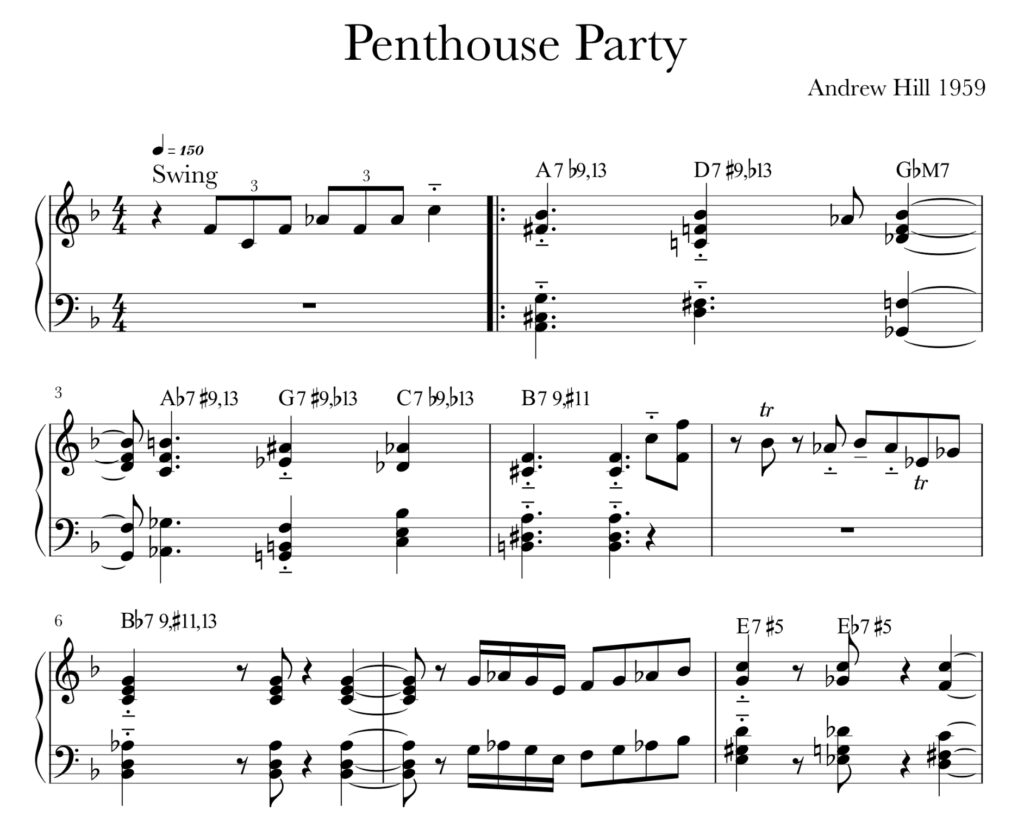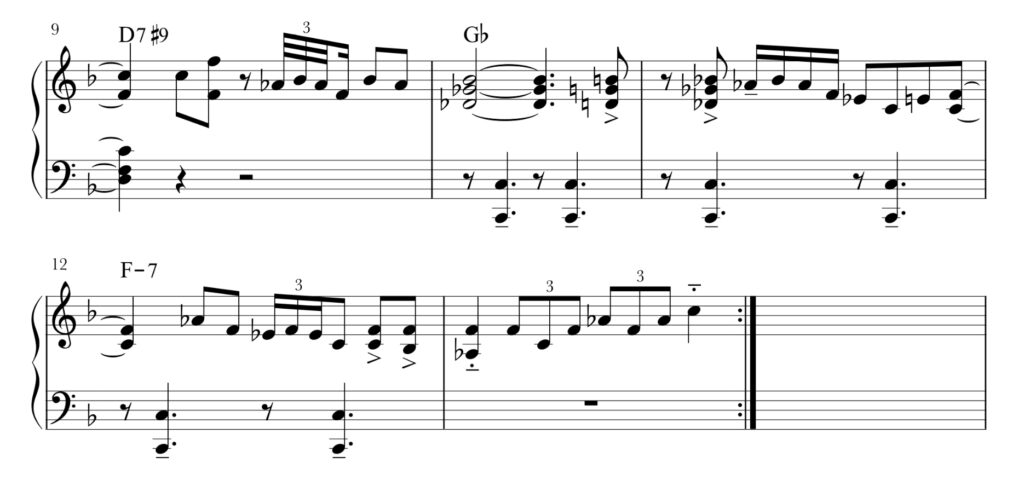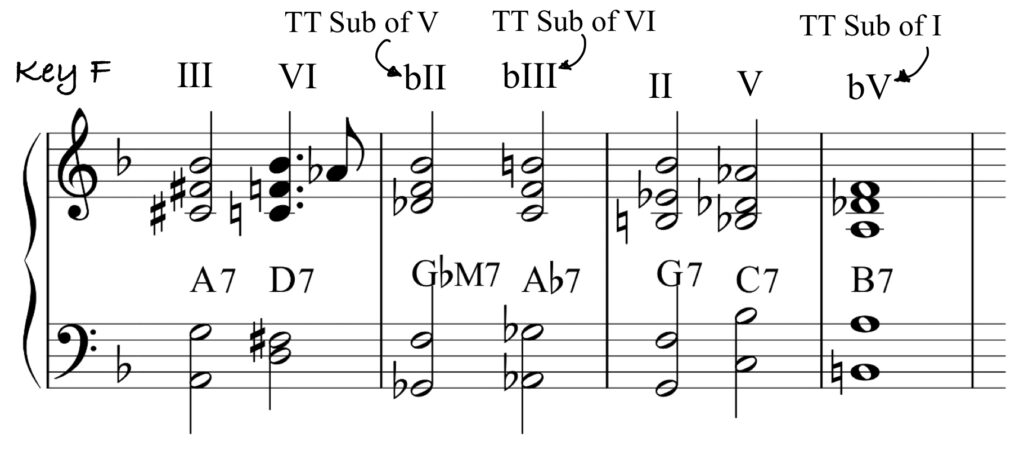Andrew Hill - 1959
‘Penthouse Party’ is the first cut on Andrew Hill’s first album. Hill would go on to compose much more “adventurous” pieces but this foreshadows what’s to come quite nicely. The bass player for this session was Malachi Favors who would soon help form the ‘Association for the Advancement of Creative Musicians’ and become the bass player for ‘The Art Ensemble of Chicago’. We said earlier that Charles Mingus was among the top five Jazz composers of all time – I would include Andrew Hill in this elite group.


Working through Andrew Hill’s extensive discography, it is clear he drew on many sources for inspiration . But, for me, it is most impressive how he absorbed and advanced the language of Thelonious Monk. Both musicians had a very elastic approach to melody, harmony and rhythm. They both found unique ways to alter familiar harmonic progressions by using chord substitutions and blending one harmonic group into other groups.
One of the major differences between the languages of Monk and Hill is their treatment of dissonance. While Monk loved to starkly expose a good dissonance, Andrew Hill tended to integrate his dissonances into the fabric of his compositions.
This integration is understandable: for more than ten years musicians were becoming increasingly familiar and comfortable with Monk’s innovations. The sounds must have been literally “integrated” into Hill’s musical pallet right from the start.
The first thing to point out is the left hand chords – they are the skeletal ‘root, third seventh’ voicings typical of Bud Powell or Thelonious Monk. The second thing is that it sounds very familiar but when we look at the chords they don’t seem to be anything we are used to. This is because Hill uses three tritone substitutions in just four bars. It turns out this is a modified cycle of fourths pattern – III – VI – V – VI – II – V – I.

The other thing we can check out is Hill’s right hand colour extensions of the left hand chords. Example 2 focuses on the internal voice leading that helps make the fairly dissonant, complex chords sound logical. This is what I mean by “integrated dissonance”.

